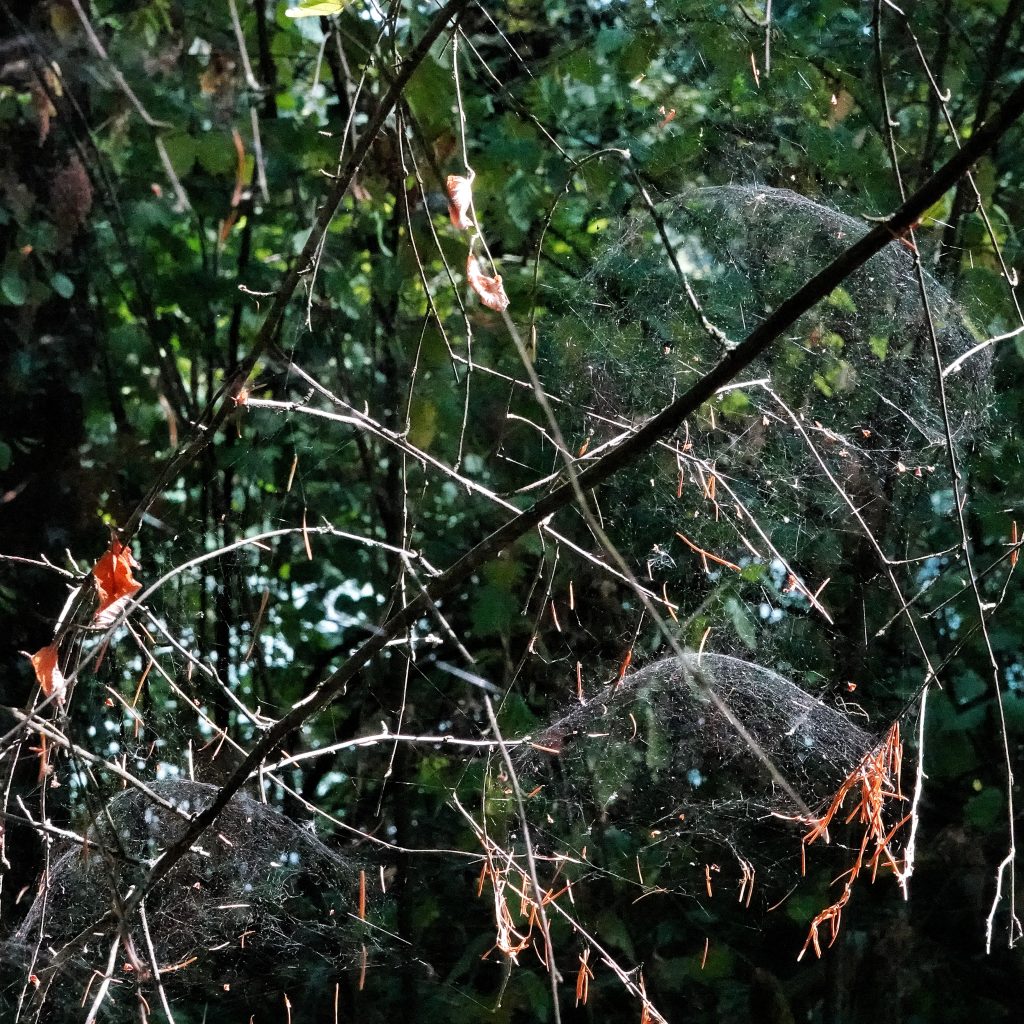
Finding the Antrodiaetus pugnax and the Araneus gemma on the same night, and then successfully identifying both of them, really got my juices flowing, so I am making a commitment this fall to doubling the number (which stands at 11 right now) of spider profiles on this website. But, every fall for the past 5 years, when most spiders one finds will be mature (because as tricky as it can be to identify mature spiders, it is difficult to impossible to positively identify the juveniles), I try to identify spiders, and every fall I end up getting frustrated and giving up, because spider identification is very difficult! There is so much variation within most species that I am seldom even sure that what I’m looking at isn’t just a morph of something more common, and they almost all require some level of microscopy, at least until one has seen so many specimens, and understands completely their range and habitat needs, that one forms a gestalt. In other words, years of constant study. But I feel like this year will be different, that I can remain calm as I try to remember the terminology and identify the tiny structures that define each species, that I’m finally ready to tackle the intricacies and tedium of spider identification. But only time will tell.
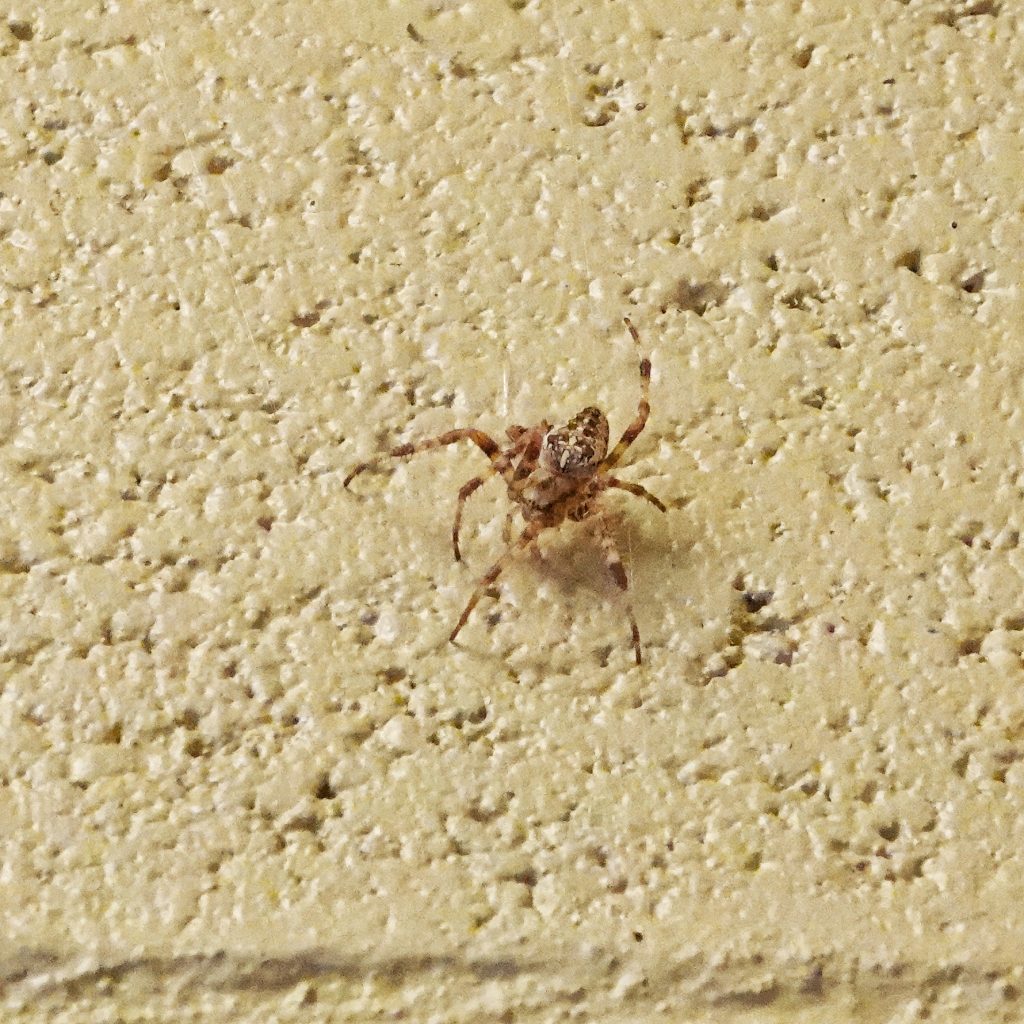
To that end I made a trip last Friday to Round Lake and the Lacamas Creek Trail (located northeast of Camas, Washington) that was dedicated to finding spiders. A quick aside before I go on- all spiders are venomous! But very, very few species are medically significant to human beings. I am aware that for tens of thousands of years, humans that didn’t respect/fear spiders often didn’t live until breeding age, so a certain amount of arachnophobia is hardwired into us. But it is, by and large, an irrational fear, and spiders do far more good than harm in this world. Rest assured that if I profile a spider that is known to be medically significant to humans, I will mention that fact. So if I don’t mention their toxicity, it is because, beyond possibly inflicting a little discomfort (and many, if not most, spiders are actually incapable of biting through the skin of a human because their fangs are too small), they are harmless. In fact it is far more likely that I will mention myths and misconceptions about the danger of any given spider (as I did with Cheiracanthium mildei ) as it is that I will say to not let your kids play with one.
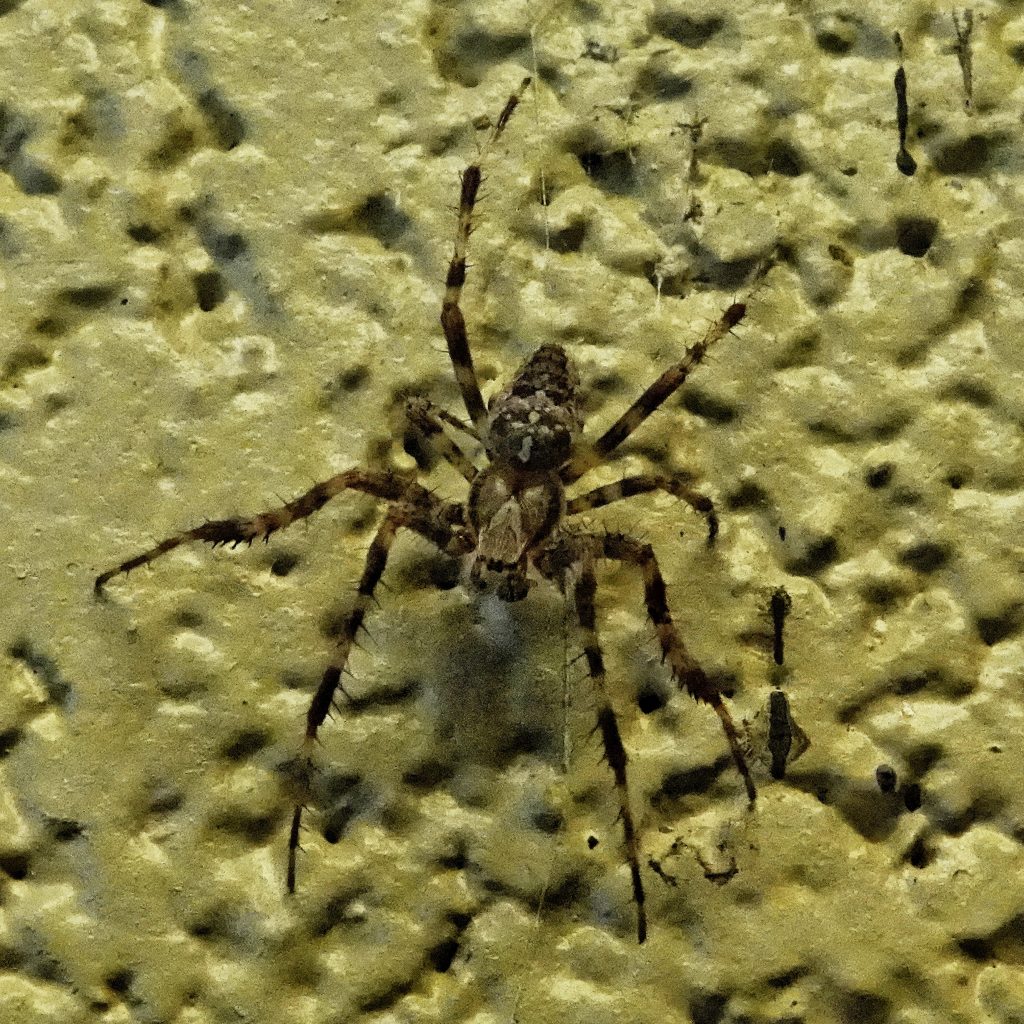
Anyway, my first stop at Round Lake was at the area around the bathrooms, because many insects are attracted to those lighted areas, and therefore so are many spiders. And almost immediately I spotted a large, long legged spider in an outside corner, conveniently located above a large counter area where people apparently do picnic prep or cleanup (it had a sink), which gave me reasonable access to the spider. Once I’d climbed up on the counter and got a good look I knew it was one of the cellar spiders, but had no idea which one so I collected it (it turned out to be Pholcus phalangiodes).
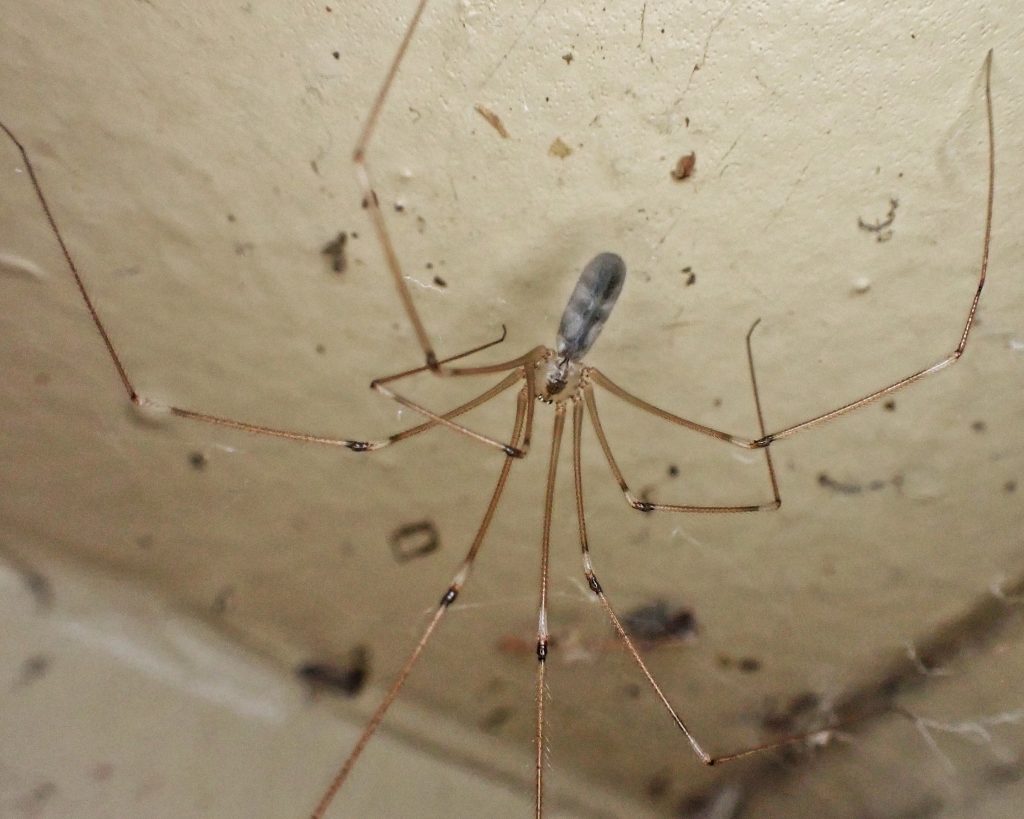
Then around the corner to the entrance to the men’s room (despite knowing my innocence I am not foolish enough to hang around the ladies room taking photos) where I found several spiders ensconced in webs near the ceiling, and no counters or sturdy trash cans in sight (anyone know of a sturdy 4’ backpacking step stool with a 250# weight limit?🤣), but I got the great idea to zip back to the van and grab one of trekking poles I bought for Pam. And it worked great! At full extension it’s almost 5’ long, which gave me about a 12’ reach. I quickly learned to wrap some web around the tip and bring the spider close enough to rule out the very common Araneus diadematus (Cross Orbweaver), and if it was something new I dropped it into a container.
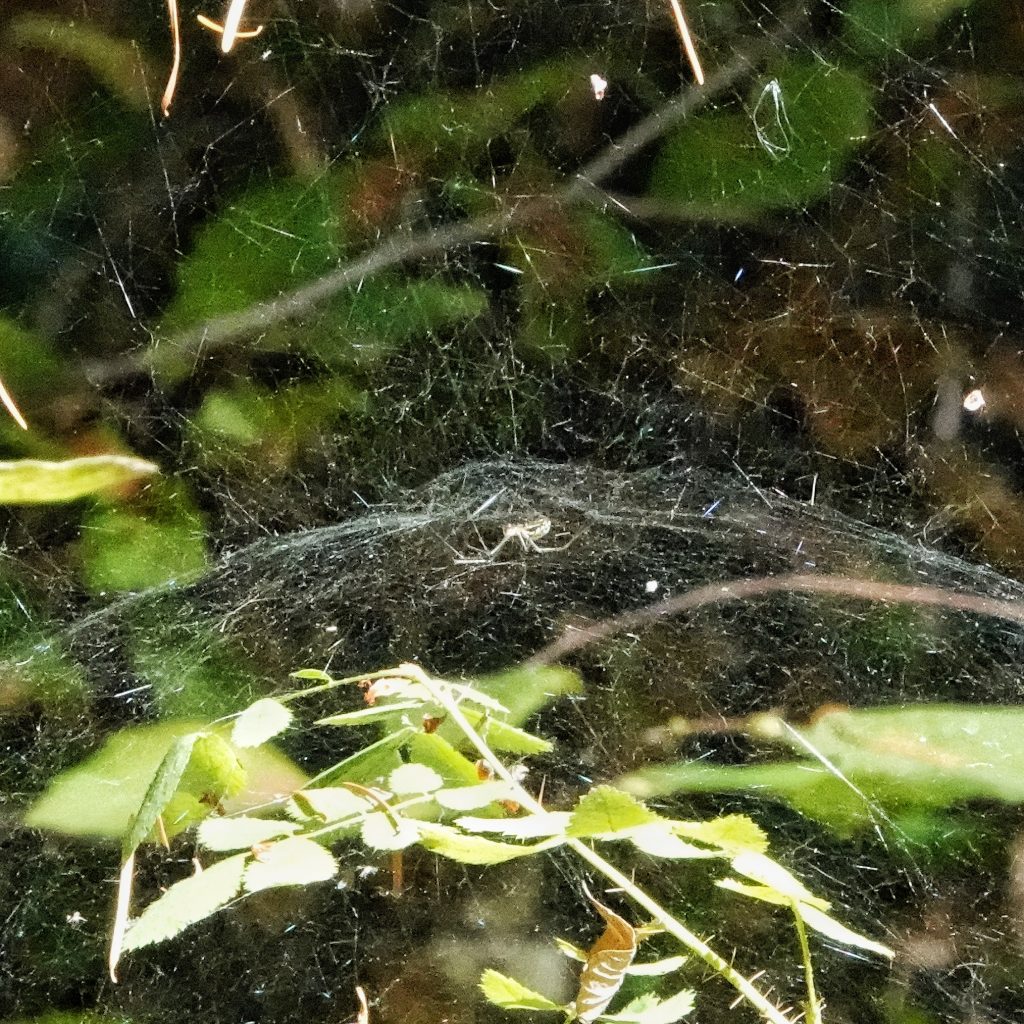
Out in the park proper I discovered dozens of the dome shaped webs of the Neriene litigiosa (Sierra Dome Spider) There were actually far more of these cool native spiders than there were the introduced cross orbweavers. In fact in the forested parts of my walk I seldom went more than 20 feet without seeing one of their webs, usually with a spider hanging beneath the peak of the dome.
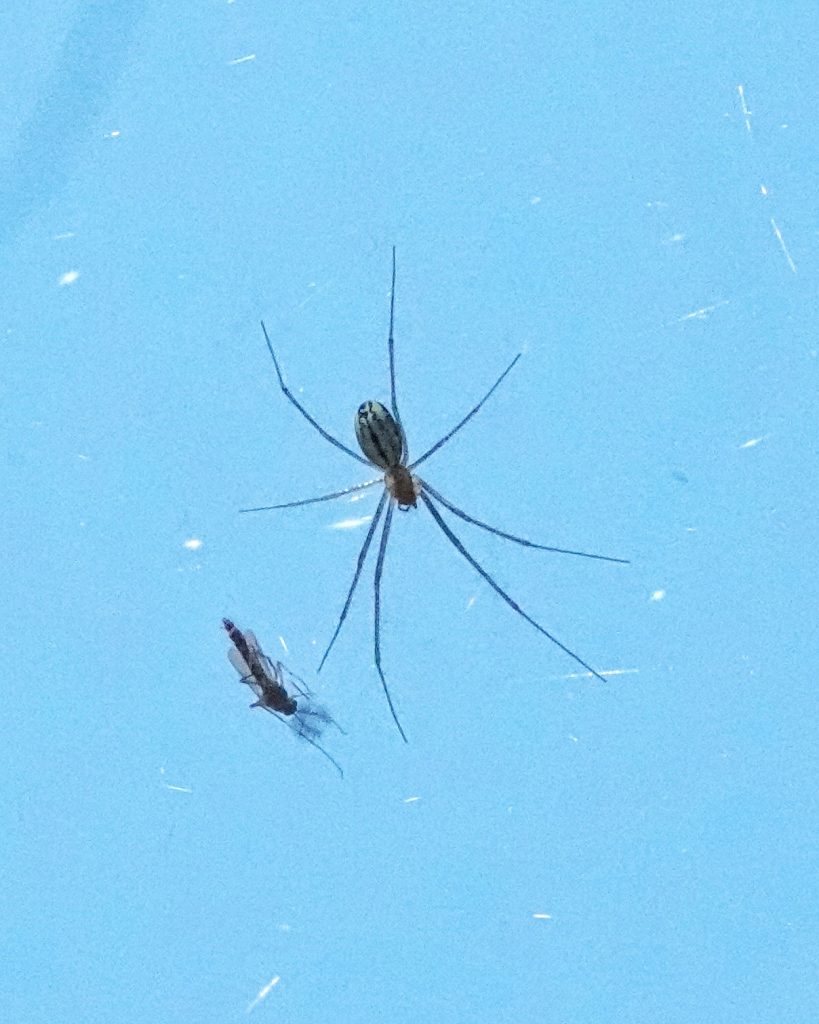
I also saw quite a few of the trashline spiders, with their distinctive line of bits of leaf and twig and hollow corpses of former meals woven into the web in a straight line, with the spider usually sitting at the top, although they can be found anywhere in that line, the idea being to confuse would be predators as to which tiny object is the spider. Most, if not all, of the trashline spiders were probably Cyclosa conica, but the ones I collected were juveniles, and therefore unidentifiable, because they overwinter as juveniles, and the adults of this species are usually done and gone by midsummer. This is one of the many things I learned from Rod Crawford when he was vetting some of my ids after the trip.
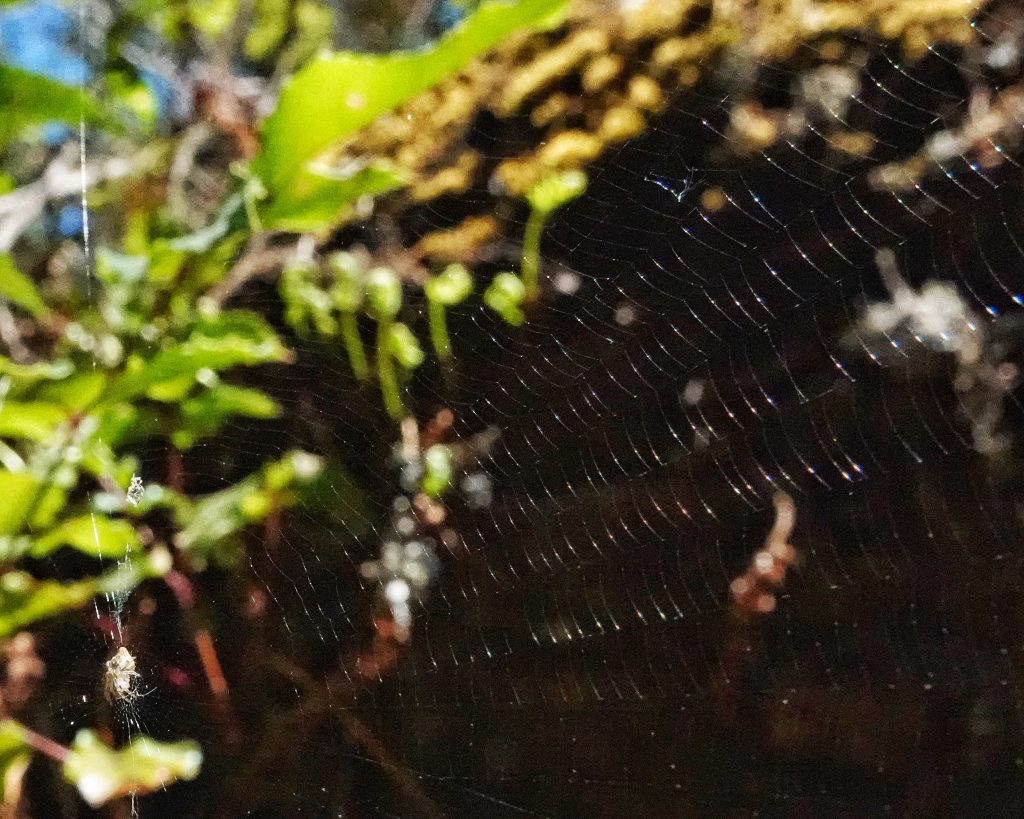
Besides the relative abundance around the bathroom, and the spiders I’ve mentioned (as well as a juvenile orbweaver, and a juvenile linyphiid that was probably a different Neriene than the Sierra dome spiders) it was pretty slim pickings. But I did find an interesting and as yet unidentified orbweaver hiding in a curled leaf at the edge of its web on an alder tree leaning over Lacamas Creek, and what may be a non-medically significant hobo spider underneath an old wooden picnic table. And possibly the coolest experience of the day was an adorable little salticid named Phanias harfordi, who leapt from its perch upon an Oregon grape leaf where I was attempting to photograph her onto my finger, and proceeded to, apparently fearlessly, check me out.
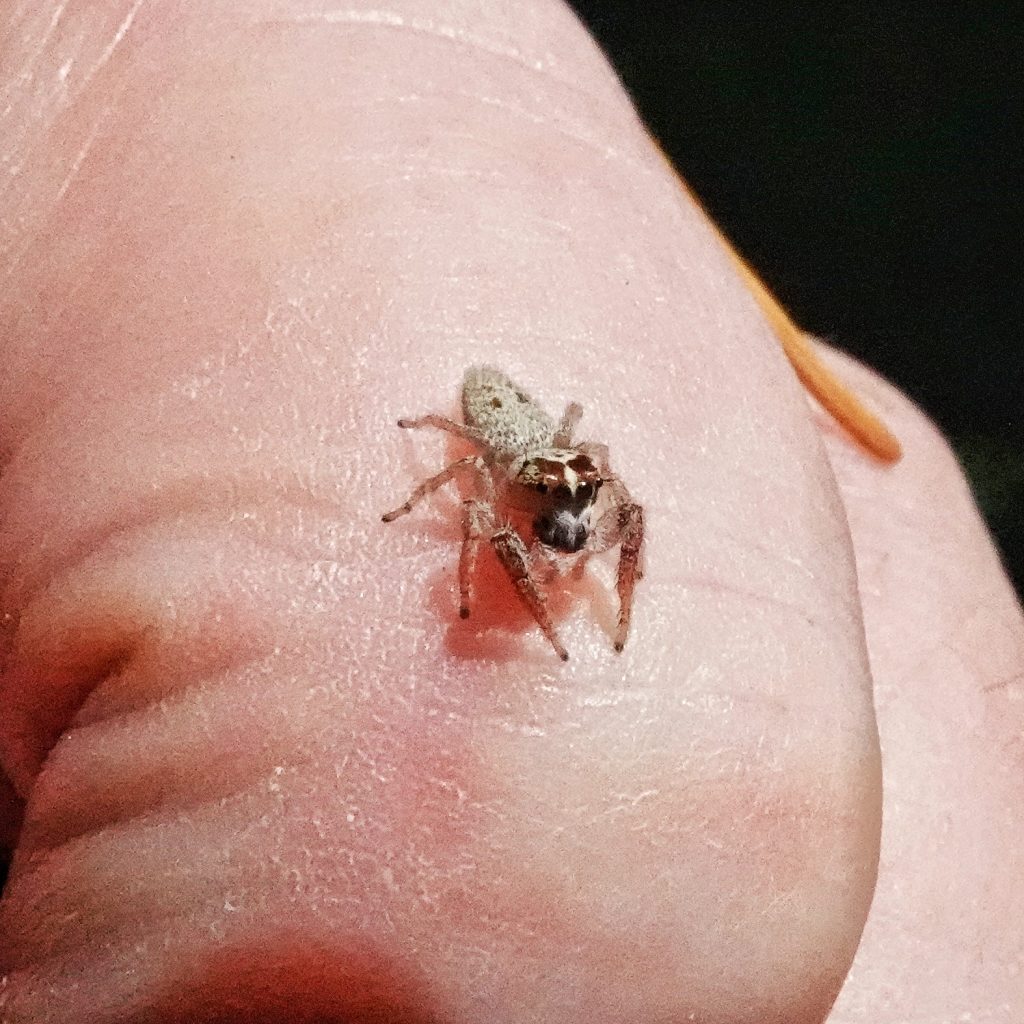
By the end of the day I had become far more attuned to spotting webs, and was only moderately distracted by birds and other bugs. I’m not saying I’m going to ignore a cool beetle or a colorful stinkbug, but a certain level of focus is kind of required, because the predators occupy different niches than the prey. But more importantly, I need to focus on spiders during the identification process, so that at least some of the terminology and structures will stick with me from specimen to specimen. I also probably need to spend some time in the leaf litter, and around some cliffs, as well as getting off the trails and moving through the brush. But this was a great start, and I may have found as many as 8 species that will be new to these profiles. I can’t wait to finish identifying them and to get back out there looking for more spiders!
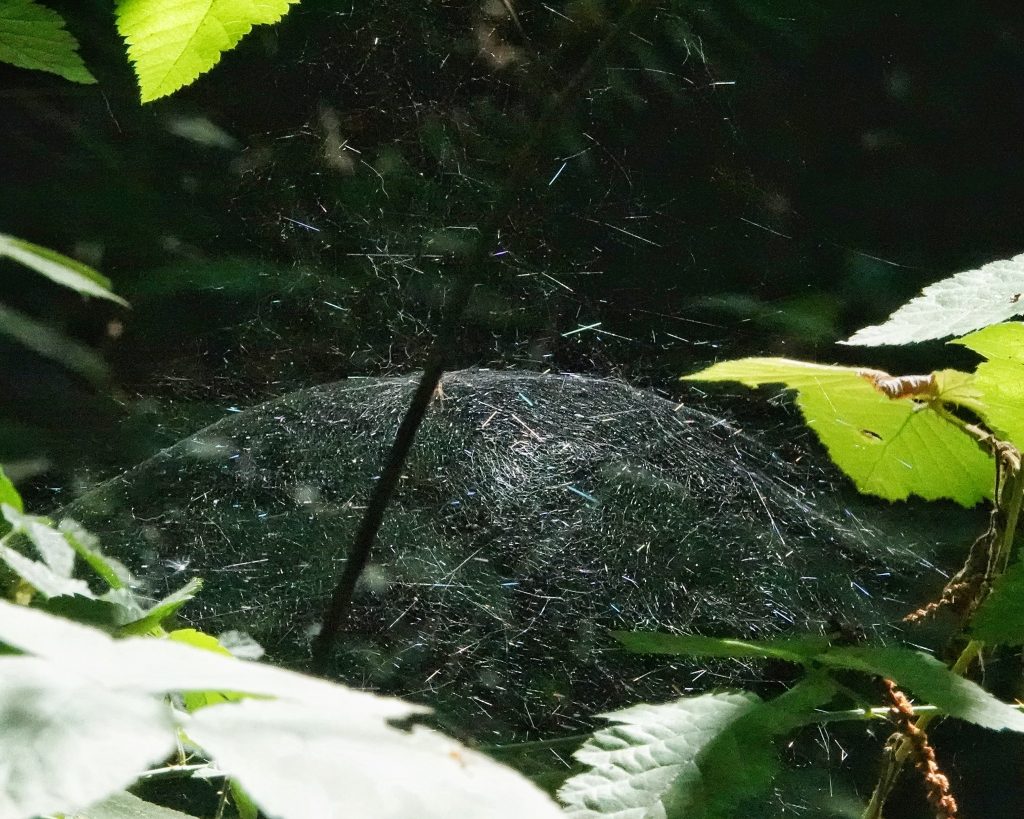
5 thoughts on “In Search of Spiders”